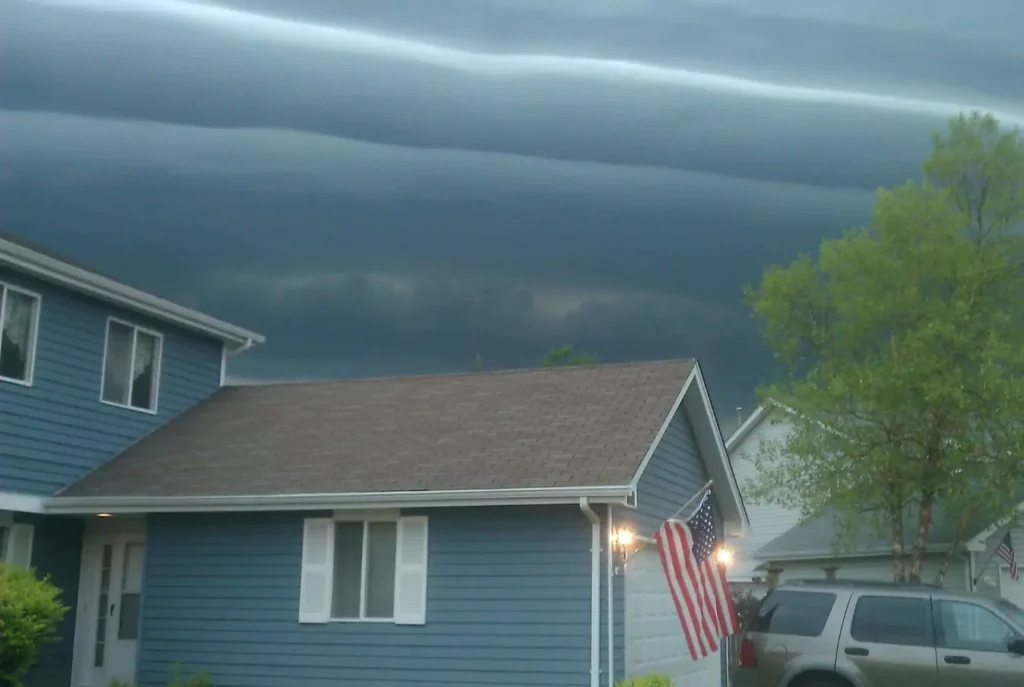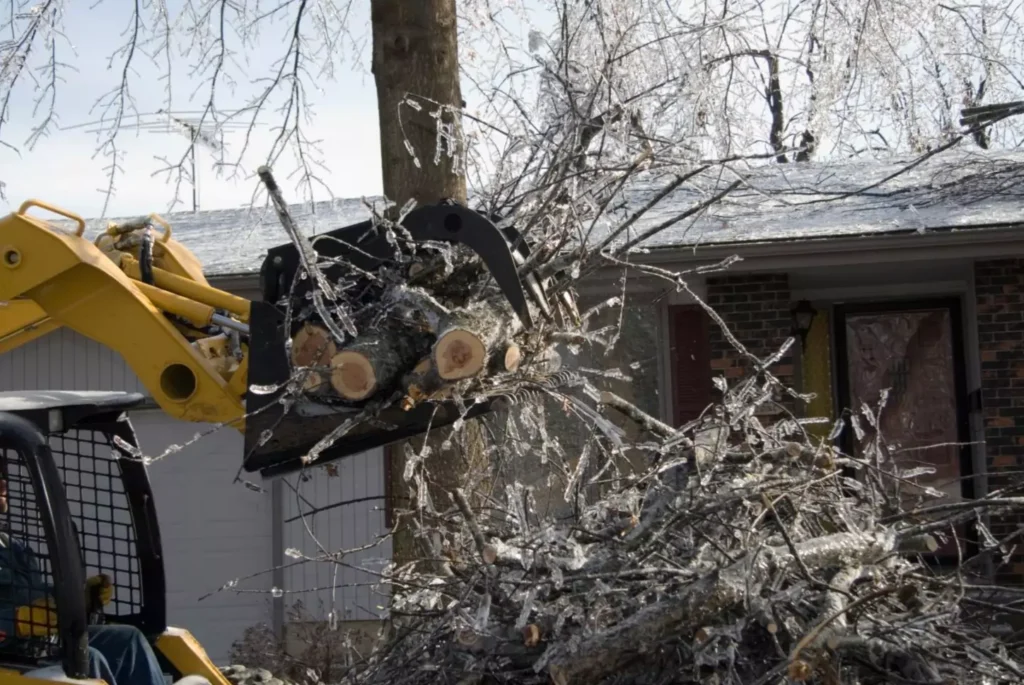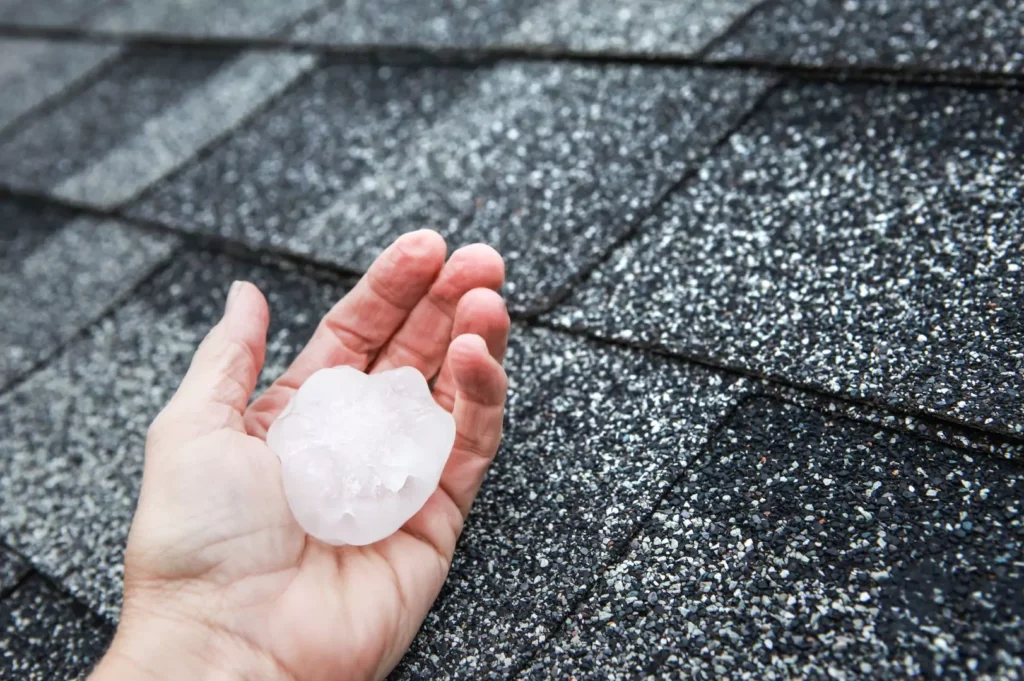When choosing rooftop material, you may come across information about various certifications and classes of resistance to various external factors. Manufacturers are eager to boast about the maximum wind speed their roofs can withstand, and the same is true for impact and fire resistance. But do marketing messages always translate into reality? Is it worth paying more for shingles with increased resistance?

Table of Contents
Fire Resistance – ANSI and ASTM
When it comes to roofing materials, fire resistance is a critical safety factor, and specific certifications help homeowners and builders ensure that materials meet safety standards. Two of the most recognized certifications for fire resistance in roofing materials are issued by the American National Standards Institute (ANSI) and the American Society for Testing and Materials (ASTM). These organizations set the guidelines and testing procedures that manufacturers must follow to demonstrate their products’ resistance to fire, ultimately giving consumers confidence in the materials they choose for their roofs.
In terms of fire resistance, roofing materials are categorized into several classes, each indicating the material’s ability to withstand exposure to flame and heat. The most common fire resistance classifications used by ANSI and ASTM are as follows:
- Class A: Materials that offer the highest level of fire protection, with the ability to withstand severe fire exposure and limit the spread of flames. These materials are the most resistant to fire and are typically used in areas with higher fire risk.
- Class B: Materials that provide moderate fire resistance. While still capable of protecting against fire, they are less resistant than Class A materials, meaning they will not perform as well in severe fire conditions.
- Class C: Materials that offer the lowest level of fire resistance. These materials can resist fire to some extent but are not suitable for areas prone to severe fire risks.
To achieve the highest fire resistance ratings, roofing materials must undergo extensive testing, which includes subjecting them to direct flame exposure, heat, and fire spread tests. To pass, they must meet specific criteria for flame spread and fire penetration rates. For example, to achieve a Class A rating, materials must limit the spread of flames to no more than 6 feet and must not be ignited or sustained by flames during testing. Additionally, materials must resist penetration by fire for a certain period, ensuring that the roof structure remains intact and safe.

However, while these certifications are valuable for guiding consumers in selecting roofing materials with adequate fire resistance, it’s important to keep in mind that certifications alone may not always reflect real-world performance. The fire resistance of roofing materials depends not just on the materials themselves but also on the installation, maintenance, and the overall structure of the roof. In some cases, even a Class A-rated roof may still fail if improperly installed or if the underlying structure is not adequately protected. Therefore, while fire resistance certifications like ANSI and ASTM provide essential insight into a material’s capabilities, they are only part of the equation when it comes to fire safety. Regular inspection and proper maintenance are equally critical in ensuring the continued safety and fire resistance of the roofing system.
Wind Resistance – ASTM D3161 and D7158
Wind resistance is another crucial factor to consider when choosing roofing materials. Two important certifications that assess the wind resistance of roofing products are ASTM D3161 and ASTM D7158. Both standards are issued by ASTM International, a global leader in developing voluntary consensus standards for materials, products, systems, and services.
ASTM D3161 evaluates roofing materials’ ability to withstand wind uplift forces. It involves testing the material’s resistance to wind speeds of up to 110 mph, simulating the effects of high winds. Roofing materials are classified based on their ability to resist these forces, with Class 1 (least resistant) to Class 4 (most resistant) being the common ratings. ASTM D7158 is a more recent standard that tests roofing materials against even higher wind speeds, up to 150 mph. It is particularly relevant for regions prone to hurricanes or severe storms. Materials are rated from Class A (most resistant) to Class D (least resistant).

Popular roofing materials from trusted manufacturers offer varying levels of wind resistance. For instance, GAF Timberline HDZ shingles, a top-rated asphalt shingle, have passed ASTM D3161 tests and are rated Class 4, meaning they can withstand winds up to 130 mph. Owens Corning Duration shingles are another solid choice, also rated Class 4for wind resistance, providing protection in areas with frequent high winds. On the metal roofing side, MBCI’s Classic Rib panels meet the ASTM D7158 requirements and are rated to withstand winds up to 150 mph, which makes them an ideal choice for regions prone to hurricanes or severe storms.
While these tests provide useful data for comparing wind resistance, they may not fully reflect how materials perform in real-world conditions, where factors such as installation quality, the age of the roof, and exposure to environmental wear can significantly affect performance. While a high wind resistance rating is valuable, it’s equally important to ensure that the roof is properly installed and maintained. Thus, while these certifications are an important starting point for assessing wind resistance, they don’t guarantee complete protection against wind damage. Proper roof installation, including adequate fastening and sealing, is essential to achieving maximum wind resistance.
Impact Resistance – UL2218
Impact resistance is a key factor in determining how well roofing materials can withstand damage from hail, falling debris, or other impacts. UL2218 is a widely recognized certification for assessing the impact resistance of roofing products, issued by Underwriters Laboratories (UL), an independent organization that tests products for safety and performance. This standard evaluates a material’s ability to resist damage from impact, such as hailstorms, by simulating real-world conditions.
The UL2218 test involves dropping steel balls of specific sizes from a set height onto roofing materials to simulate the impact of hailstones. The materials are then assigned an impact resistance class, ranging from Class 1 (least resistant) to Class 4 (most resistant). A Class 4 rating indicates that the material has withstood impacts from 2-inch hailstones at a velocity of 20 feet per second without significant damage, making it the highest standard of impact resistance.

In terms of roofing materials, asphalt shingles, composite shakes, and natural slate tiles can all be rated under UL2218. GAF Timberline HDZ shingles, for instance, are rated Class 4 for impact resistance, which means they can withstand hailstorms with large hailstones without sustaining significant damage. These shingles are highly durable and offer a great balance of price, protection, and longevity. Another popular choice, Owens Corning Duration shingles, also achieve Class 4 impact resistance, making them well-suited for regions prone to hailstorms or high winds.
DaVinci Roofscapes’ composite shakes, such as the DaVinci Single-Width Shake, are designed to replicate the appearance of natural wood while offering exceptional durability. These composite shakes are also Class 4 under the UL2218 standard, and they are particularly resistant to both impact and fading. The high-quality composite material ensures that these shakes will not crack or chip easily, even when impacted by large hailstones, making them an excellent choice for areas that experience severe weather.
Natural slate tiles are another popular roofing option known for their durability, but their performance under impact can vary. Natural slate, being a stone product, can achieve Class 4 impact resistance in some cases, although it is more prone to cracking or breaking under heavy impacts compared to composite materials. Despite this, slate is still highly valued for its aesthetic appeal and longevity, especially in upscale or historic homes.

While Class 4 impact-resistant materials are ideal for areas that experience frequent hailstorms or severe weather, it’s important to note that no roofing material is completely immune to damage. Factors such as installation quality, the slope of the roof, and the age of the material can all affect how well the roof withstands impacts. Moreover, even Class 4 materials may sustain cosmetic damage such as dents or scratches, though they are less likely to suffer structural damage that could lead to leaks.
In conclusion, UL2218 Class 4 impact-resistant materials provide an excellent level of protection against hail and falling debris. Choosing roofing materials with a high UL2218 rating can give homeowners peace of mind, especially in areas with frequent severe weather conditions. However, the installation process and ongoing maintenance are equally important to ensure that the roof continues to perform well over time.
LEED Contribution
LEED (Leadership in Energy and Environmental Design) certification promotes environmentally sustainable building practices, with roofing materials contributing through energy efficiency and reduced heat absorption. Cool roofs and reflective shingles, for instance, can help a building earn points towards LEED certification, offering long-term energy savings and reducing urban heat.
However, while LEED-certified roofs may sound appealing, their actual impact can be limited. The certification process often adds significant costs, making these products more expensive. For many homeowners, the benefits of LEED materials may not outweigh the higher upfront price, especially in areas where cooling needs are less critical. When considering a LEED-certified roof, it’s important to evaluate whether the environmental benefits align with your budget and specific needs.

Other Certifications
Local certifications play a vital role in ensuring that roofing materials meet specific regional requirements. The ICC-ESR (International Code Council Evaluation Service Report) is a widely recognized certification that confirms compliance with local building codes and regulations, offering assurance of safety and reliability. CA Title 24 applies specifically to California, ensuring roofing materials meet energy efficiency standards to minimize environmental impact. CCMC (Canadian Construction Materials Centre) certification guarantees that products meet Canadian building codes for durability and performance. Lastly, the WUI (Wildland-Urban Interface) certification is essential for roofing materials in fire-prone areas, confirming they meet fire-resistance standards for structures in high-risk zones. Each of these certifications ensures that roofing materials are suited to specific regional challenges, enhancing safety and long-term performance.

